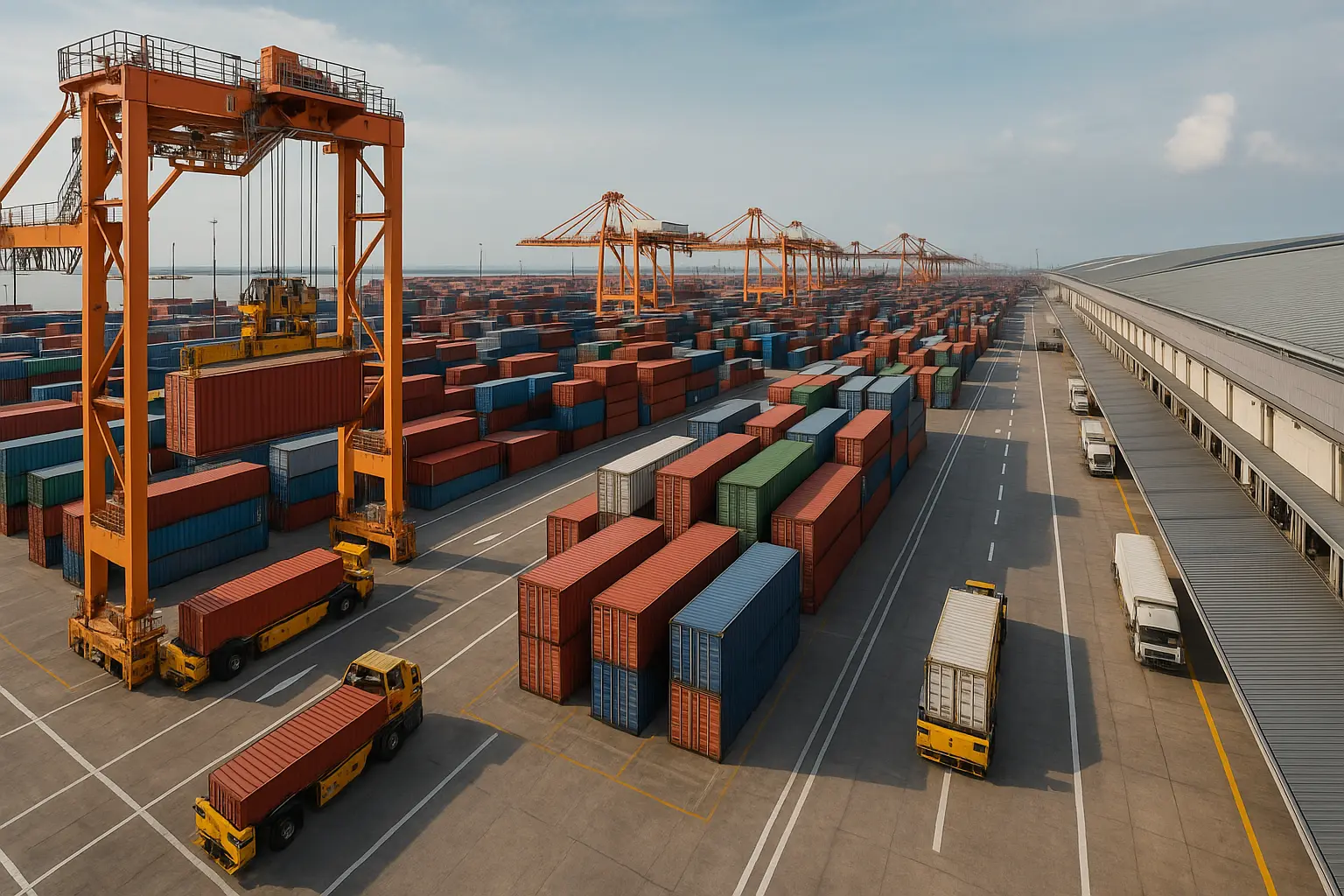Intelligent Ports and Warehouses: The Revolution of Digital Twins in Logistics
Intelligent Ports and Warehouses: The Revolution of Digital Twins in Logistics
Introduction
Imagine a port where every container is tracked in real-time, warehouses predict demand before it occurs, and delays disappear because each movement is simulated first in a perfect digital world. This is not science fiction: it is the reality of leading companies that are already implementing gemelos digitales en sus cadenas de suministro.
While some continue struggling with operational inefficiencies, others optimize each process before it happens in the physical world. According to McKinsey, companies that integrate digital twins in logistics reduce their operating costs by 15-30% and improve efficiency by up to 25%. In this context, the intelligent ports and warehouses position themselves as epicenters of digital transformation.
In this article, you will discover how digital twins transform logistics infrastructure into machines of operational precision. We will explore concrete strategies that are already revolutionizing global logistics, in line with digitalization and BIM services from Foundtech.
What are Digital Twins in the Supply Chain?
Un gemelo digital in logistics is the virtual replica of the entire physical infrastructure of the supply chain: ports, warehouses, transportation fleets and distribution centers. This representation integrates real-time data from IoT sensors, ERP systems, GPS and other sources, creating a predictive and operational model that allows decisions to be made before problems appear.
Learn more about digital twins in logistics
Key Components of a Logistics Digital Twin
- Digital infrastructure: 3D BIM modeling of port facilities and warehouses, IoT sensors for environmental monitoring and predictive analysis platforms with AI.
- Real-time data: GPS positioning information, operational status of equipment, inventory flows and environmental conditions.
- Predictive capabilities: scenario simulation, route and process optimization, predictive maintenance and demand analysis.
Unlike traditional systems that react to problems, digital twins prevent them through continuous simulation and optimization.
Also read: Digital Twins and Supply Chain
Intelligent Ports: The New Era of Maritime Logistics
Intelligent ports evolve from being static infrastructure to fully integrated digital ecosystems. Thanks to digital twins, they optimize every aspect of their operations, from ship docking to container management.
Specific Operational Benefits
- Maritime traffic optimization: route simulation, weather prediction and automatic berth coordination, reducing waiting times by up to 40%.
- Intelligent container management: real-time tracking, space optimization and reduction of losses and damages by up to 60%;
- Predictive maintenance: cranes and equipment monitoring with failure prediction and up to 30% maintenance savings.
Also read: Predictive Maintenance with Digital Twins: Practical Guide
Intelligent Warehouses: Revolution in Inventory Management

Intelligent warehouses equipped with digital twins radically transform inventory management. Using sensors and algorithms, they create exact digital replicas that allow simulation, optimization and real-time control.
Integrated Technologies in Intelligent Warehouses
- Real-Time Locating Systems (RTLS): precise tracking of products and equipment, picking route optimization and 70% reduction in search times.
- Collaborative Robotics: AMR robots coordinated with human workers, increasing productivity by up to 300%.
- Predictive demand analysis: machine learning forecasting that reduces excess inventory by up to 25%.
Successful Implementation Cases
- Amazon Fulfillment Centers: with over 200,000 robots, uses digital twins to optimize distribution and reduce operational costs by 50%;
- DHL Supply Chain: application of digital twins in dozens of warehouses has allowed them to reduce labor costs by 15% and improve inventory accuracy by 30%.
Quantifiable Benefits
Metric | Average Improvement | Impact |
Inventory Accuracy | +25 % | Loss Reduction |
Picking Speed | +40 % | Menor costo laboral |
Space Utilization | +30 % | Optimization of m² |
Delivery Time | -35 % | Higher Customer Satisfaction |
Operational Costs | -20 % | Direct ROI |
Supply Chain Optimization with IoT and Big Data
The Integration of Internet of Things (IoT) and Big Data digital twins create an ecosystem of information that completely transforms the visibility and control of the supply chain. This convergence enables real-time data-driven decisions and high-precision predictions.
Integrated Technology Architecture
- IoT Sensors: temperature, humidity, vibration and location tracking; generation of millions of events per second to feed the digital twins.
- Data Platform: real-time massive ingestion and storage with systems like Kafka and scalable data lakes.
- Artificial Intelligence: machine learning for demand forecasting, route optimization and early risk detection.
Specific Use Cases
- Complete product traceability: tracking from source to end consumer with automatically verified transport conditions.
- Dynamic route optimization: adaptation to traffic, weather and operational constraints to reduce delivery times by 25%.
- Proactive risk management: early identification of disruptions with simulations and contingency plans.
Performance Metrics (KPIs)
- OEE (Overall Equipment Effectiveness): >85 %
- Perfect Order Rate: >98 %
- Reduction of logistics costs: 15–25 %
- Implementation ROI: 200–400 % in 12–18 months
Sustainability and Energy Efficiency in Digital Logistics
The adoption of digital twins not only increases operational efficiency, but also contributes to sustainability objectives in the supply chain.
Sustainability Strategies
- Energy optimization: monitoring and control of lighting and HVAC, achieving energy consumption reductions of up to 40%;
- CO₂ emission reduction: route optimization, load consolidation and predictive engine maintenance, reducing carbon footprint by up to 35%;
- Circular waste management: tracking of recyclable materials and waste revaluation to reduce waste by up to 50%.
Certifications and Compliance
Digital logistics projects typically align with international standards and certifications (ISO 14001, ISO 9001), and integrate with local and sectoral regulations to ensure sustainable management. Foundtech incorporates these practices into its digital twin and BIM solutions, ensuring regulatory compliance and environmental responsibility.
Conclusion: The Future of Logistics Is Digital and Sustainable
Intelligent ports and warehouses are not just a futuristic concept; they are a present reality that is already revolutionizing the global supply chain. Implementing digital twins means anticipating problems, optimizing resources and reducing emissions, generating value from day one.
AtFoundtech lead the adoption of these technologies in Latin America. If you want to learn more cases and applications, visit our blog, where you will find articles and practical guides on BIM, digital twins, IoT and more.
Are you ready to transform your logistics? Contact us and discover how a digital twin can change your operation forever.



